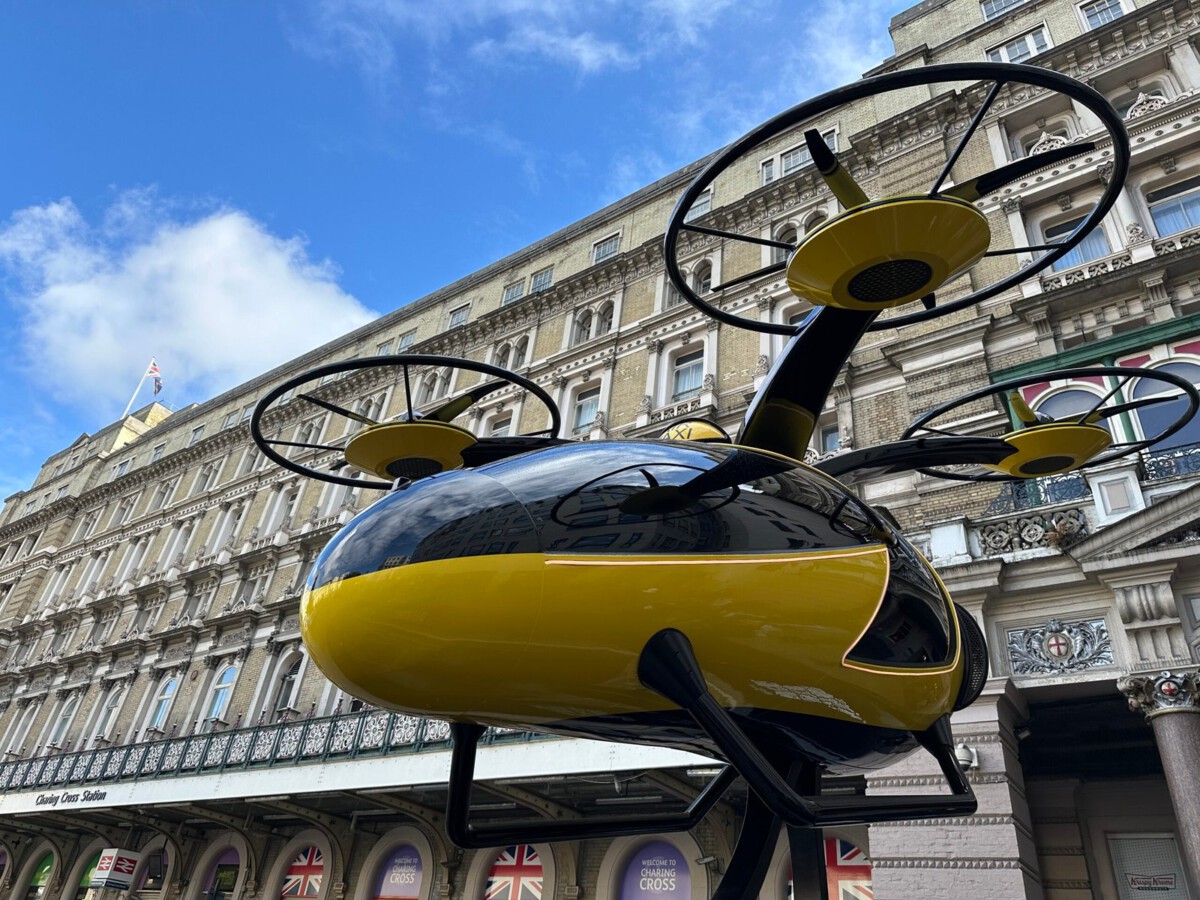Urban Air Mobility: A Vision Takes Shape

Imagine a city where commuters soar above gridlocked streets, traveling from one side of town to the other in minutes. Urban Air Mobility (UAM) is not just a futuristic dream—it’s becoming a global ambition. UAM refers to the use of small, electric, vertical take-off and landing (eVTOL) aircraft to move people and goods efficiently across urban environments. This new mode of transport promises to relieve congestion, reduce pollution, and redefine how we navigate cities. According to the International Civil Aviation Organization, UAM could cut travel times in some cities by as much as 50%. Interest is skyrocketing, with both private companies and governments investing billions into research and development. The idea that air taxis might be as common as ride-shares is gaining real momentum. For many, the prospect feels both thrilling and a little unbelievable.
Major Companies Racing to the Sky

The race to dominate urban airspace has attracted some of the world’s most innovative companies. Joby Aviation, for example, has already logged over 1,000 test flights, while Archer Aviation and Germany’s Volocopter are progressing through safety certifications. EHang, a Chinese company, has even flown autonomous passenger drones over cities like Guangzhou. Automotive giants such as Hyundai and Toyota are also investing heavily in UAM, signaling industry-wide confidence in the technology. The Federal Aviation Administration is collaborating with these companies to establish the first comprehensive safety standards. According to a McKinsey & Company report, the UAM market could reach $1 trillion in value by 2040. This surge of activity demonstrates how seriously industry leaders are taking the vertical travel revolution. The number of prototypes in the air is growing every month.
Cutting-Edge Technology Propelling UAM

The success of UAM relies on rapid advances in several key technologies. Electric propulsion is at the heart of most eVTOL designs, enabling quieter and more eco-friendly flights compared to traditional helicopters. Battery technology is crucial, with leading-edge companies like QuantumScape developing higher-capacity batteries to extend flight range and reduce charging times. Artificial intelligence and autonomous flight systems are designed to handle complex urban navigation, minimizing human error. Many UAM prototypes are already equipped with sophisticated sensors and AI-powered collision avoidance systems. Lightweight composite materials are being used to create safer, more energy-efficient airframes. The integration of air traffic management software is a massive undertaking, but necessary to prevent mid-air congestion. These technological leaps are moving UAM from science fiction to reality. The speed of progress is surprising even industry insiders.
Environmental Impact: Greener Cities from Above

One of the strongest arguments for UAM is its potential to dramatically lower urban pollution. In 2021, the Environmental Protection Agency reported that transportation accounted for 29% of the United States’ greenhouse gas emissions. Electric UAM vehicles, powered by renewable energy, could slash these emissions by as much as 90% compared to traditional cars, according to the National Renewable Energy Laboratory. Unlike gas-guzzling helicopters, eVTOLs are much quieter, helping to reduce city noise pollution—a major quality-of-life issue in dense areas. Cleaner air and less noise could improve health outcomes for millions of urban dwellers. UAM could also allow for more green spaces, as fewer roads might be needed over time. The environmental benefits are inspiring cities to invest in UAM as a core part of their sustainability plans. The promise of cleaner, quieter cities is a powerful motivator for policymakers.
Regulatory Hurdles and Safety First

No new mode of transportation can take off without clear rules and guarantees of safety. Aviation authorities such as the FAA and the European Union Aviation Safety Agency are working to create rigorous certification processes for eVTOL aircraft. Urban skies are complex environments, and integrating hundreds or even thousands of new flying vehicles is a massive challenge. Air traffic management systems must be upgraded to prevent accidents and ensure smooth operations. Many experts agree that public trust will hinge on a flawless safety record in the early years. Cities will need new regulations for vertiports, emergency procedures, and noise abatement. The process is slow and methodical, but essential for long-term success. Until these hurdles are overcome, widespread UAM use will remain on the horizon.
The Economics of Vertical Travel

The financial stakes of UAM are enormous. McKinsey predicts that the UAM industry could create over 280,000 jobs in the United States by 2040, spanning manufacturing, operations, and maintenance. Cities that embrace UAM early could see significant boosts in economic activity, especially in tourism and business travel. Startups and established companies are pouring billions into the development of aircraft, infrastructure, and digital platforms. However, the initial costs for building vertiports and charging stations are high, requiring public-private partnerships and government incentives. Some economists warn that ticket prices may be steep in the early years, potentially limiting access to wealthier passengers. As technology matures, costs are expected to drop, making UAM more accessible. The ripple effects of this new industry could transform local and global economies.
Public Perception: Hopes and Fears

Public acceptance could make or break UAM’s future. Surveys show that while many people are excited by the idea of flying taxis, they also harbor concerns about safety, privacy, and noise. A 2022 Deloitte study found that 54% of urban residents would be willing to try UAM, but only if safety was guaranteed. Communities worry about aircraft flying over homes and schools, and about potential accidents. Demonstration flights and pilot programs are being used to build trust, showing that UAM can operate safely and quietly. Education campaigns are underway to answer questions and address skepticism. Some city leaders are even holding town hall meetings to gather feedback and shape regulations. Building public confidence is a slow process, but positive experiences could quickly shift opinions. The path to acceptance will require patience and transparency.
Global UAM Efforts: Who’s Leading the Way?

Urban Air Mobility is a truly global movement, with groundbreaking projects happening on nearly every continent. Paris plans to deploy eVTOL shuttles for the 2024 Olympics, creating dedicated flight corridors and vertiports. Singapore is testing air taxi services in partnership with Volocopter, aiming to be the first Asian city to offer regular UAM flights. In Dubai, authorities are working with Joby and EHang to introduce autonomous aerial vehicles for both tourists and residents. The European Union is funding research into sustainable urban aviation networks, hoping to set international standards. South Korea has unveiled a roadmap to commercialize UAM by 2025, investing heavily in infrastructure and public trials. These examples show how UAM is sparking competition for leadership in the “vertical travel” race. Each city’s efforts offer unique lessons and models for others to follow.
Infrastructure: Building the Sky Roads

For UAM to succeed, cities need new infrastructure—vertiports, charging stations, and air traffic control centers. Vertiports are being designed to fit atop buildings, in parking lots, and near major transit hubs. These hubs must accommodate not only passengers, but also maintenance teams, charging systems, and security staff. Digital infrastructure is equally important, as real-time data sharing will be needed to manage flights safely. Companies are developing apps and booking platforms that integrate with existing transit systems, making UAM part of a seamless travel experience. Some cities are exploring public-private partnerships to share the cost and risk of building this infrastructure. The scale of construction required is immense, and will likely unfold in phases over several years. Early investments in infrastructure will determine which cities lead the UAM revolution.
Timelines and Real-World Testing

Pilot projects and small-scale launches are already underway in several major cities. In 2023, Joby Aviation flew its first air taxi in New York City, carrying employees across the Hudson River in just minutes. Paris, Los Angeles, and Tokyo have announced plans to begin commercial UAM services between 2024 and 2026. These initial flights are heavily regulated, with trained pilots and strict safety protocols. Real-world testing is vital for refining both the technology and the passenger experience. As more data becomes available, companies will adjust designs and operations to address unforeseen challenges. Experts believe that full-scale, autonomous UAM networks could be operational in a handful of cities by 2030. The speed of these developments will depend on regulatory progress, public acceptance, and technological breakthroughs.
Social Equity and Accessibility in UAM

Ensuring that UAM benefits everyone, not just the wealthy, is a pressing concern for policymakers. Ticket prices for early UAM flights are expected to be high, but companies are working to lower costs through mass production and automation. Some cities are considering subsidies or public funding to make UAM accessible to more residents. Integrating UAM with existing public transport could help bridge gaps in service for underserved communities. Advocates argue that vertical travel could open up job opportunities and reduce “transportation deserts” in cities. There’s a risk that, without careful planning, UAM could reinforce social inequalities rather than alleviate them. Ongoing engagement with community groups is essential to ensure fair access. Accessibility and equity will remain at the forefront as UAM becomes a reality.
Urban Air Mobility’s Road Ahead

Urban Air Mobility is rapidly moving from fantasy to fact, fueled by innovation, investment, and a pressing need for new transportation solutions. The journey to a future where travel is vertical will be shaped by ongoing advancements in technology, evolving regulations, infrastructure development, and shifts in public perception. The possibilities ahead are vast, and the impact on our cities and lives could be profound.






